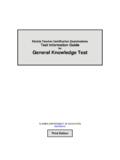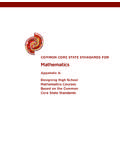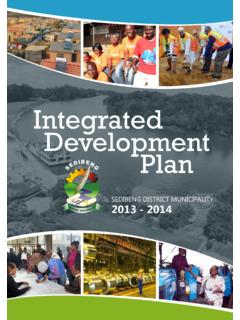Transcription of Numbers: Rational and Irrational
1 NUMBERS: Rational AND Irrational IVAN NIVEN 2+V-5 3-4i The L. W. Singer Company New Mathematical Library NUMBERS: Rational AND Irrational COMPLEX NUMBERS REAL NUMBERS (REAL) ALGEBRAIC NUMBERS NUMBERS CONSTRUCTIBLE BY STRAIGHTEDGE AND COMPASS Rational NUMBERS INTEGERS I NATURAL I NUMBERS NEW MATHEMATICAL LIBRARY 'Published by Random House and The L. W. Singer Company for the Monograph Project of the SCHOOL MATHEMATICS STUDY GROUPt EDITORIAL PANEL Mark Kac, Chairman (1961-1964) Rockefeller Institute Anneli Lax, Technical Editor New York University E. G. Begle, Stanford University L. Bers (1958-62; Chairman, 1958-1961), New York University W. G. Chinn (1961-64), San Francisco Public &lwols H. S. M. Coxeter (1958-61), University of Toronto P. J. Davis (1961-64), National Bureau of Standards P. R. Halmos (1958-63), University of Michigan J. H. Hlavaty (1958-63), DeWitt Clinton High Sclwol N. Jacobson (1958--61), Y ale University R.
2 S. Pieters (1958-62), Phillips Academy H. O. Pollak (1958-61), Bell Telephone Laboratories, G. P6lya (1958-61), Stanford University H. E. Robbins (1958-61), Columbia University W. W. Sawyer (1958-60), Wesleyan University N. E. Steenrod (1958-62), Princeton University J. J. Stoker (1958-61), New York University L. Zippin (1958-61), Queens College t The School Mathematics Study Group represents all parts of the mathe matical profession and all parts of the country. Its activities are aimed at the improvement of teaching of mathematics in our schools. Further information can be obtained from: School Mathematics Study Group, School of Education, Stanford University, Stanford, California. NUMBERS: Rational AND Irrational by Ivan Niven University of Oregon 1 THE L. W. SINGER COMPANY A Division of Random House Second Printing Copyright, 1961, by Yale University All rights reserved under International and Pan-American Copyright Conventions.
3 Published in New York by Random House, Inc., and simultaneously in Toronto, Canada, by Random House of Canada, Limited. School Edition published by The L. W. Singer Company Library of Congress Catalog Card number : 61-6226 Manufactured in the United States of America Note to the Reader This book is one of a series written by professional mathematicians in order to make some important mathematical ideas interesting and understandable to a large audience of high school students and laymen. Most of the volumes in the New Mathematical Library cover topics not usually included in the high school curriculum; they vary in diffi culty, and, even within a single book, some parts require a greater degree of concentration than others. Thus, while the reader needs little technical knowledge to understand most of these books, he will have to make an intellectual effort. If the reader has so far encountered mathematics only in classroom work, he should keep in mind that a book on mathematics cannot be read quickly.
4 Nor must he expect to understand all parts of the book on first reading. He should feel free to skip complicated parts and return to them later; often an argument will be clarified by a subsequent remark. On the other hand, sections containing thoroughly familiar material may be read very quickly. The best way to learn mathematics is to do mathematics, and each book includes problems, some of which may require considerable thought. The reader is urged to acquire the habit of reading with paper and pencil in hand; in this way mathematics will become increasingly meaningful to him. For the authors and editors this is a new venture. They wish to acknowledge the generous help given them by the many high school teachers and students who assisted in the preparation of these mono graphs. The editors are interested in reactions to the books in this series and hope that readers will write to: Editorial Committee of the NML series, in care of THE INSTITUTE OF MATHEMATICAL SCIENCES, NEW YORK UNIVERSITY, New York 3, The Editors NEW MATHEMATICAL LIBRARY Other titles will be announced as ready 1.
5 NUMBERS: Rational AND Irrational by Ivan Niven 2. WHAT IS CALCULUS ABOUT? by W. W. Sawyer 3. INTRODUCTION TO INEQUALITIES by E. Beckenbach and R. Bellman 4. GEOMETRIC INEQUALITIES by N. D. Kazarinoff 5. THE CONTEST PROBLEM BOOK, Problems from the Annual High School Contests of the Mathematical Association of America, compiled and with solutions by Charles T. Salkind 6. THE LORE OF LARGE NUMBERS by P. J. Davis 7. USES OF INFINITY by Leo Zippin 8. GEOMETRIC TRANSFORMATIONS by I. M. Yaglom, trans lated from the Russian by Allen Shields vi CONTENTS Introduction 3 Chapter 1 Natural Numbers and Integers 9 Primes 10 Unique Factorization 11 Integers 13 Even and Odd Integers 15 Closure Properties 18 A Remark on the Nature of Proof 19 Chapter 2 Rational Numbers 21 Definition of Rational Numbers 21 Terminating and Non-terminating Decimals 23 The Many Ways of Stating and Proving Propositions 26 Periodic Decimals 30 Terminating Decimals Written as Periodic Decimals 34 A Summary 36 Chapter 3 Real Numbers 38 The Geometric Viewpoint 38 Decimal Representations 39 The Irrationality of v'2 42 The Irrationality of V3 43 The Irrationality of V6 and v'2 + V3 44 The Words We Use 45 An Application to Geometry 46 A Summary 51 viii CONTENTS Chapter 4 Irrational Numbers 52 Closure Properties 52 Polynomial Equations 54 Rational Roots of Polynomial Equations 57
6 Further Examples 62 A Summary 64 Chapter 5 Trigonometric and Logarithmic Numbers 65 Irrational Values of Trigonometric Functions 65 A Chain Device 68 Irrational Values of Common Logarithms 69 Transcendental Numbers 71 Three Famous Construction Problems 73 Further Analysis of 78 A Summary 79 Chapter 6 The Approximation of Irrationals by Rationals 81 Inequalities 81 Approximation by Integers 84 Approximation by Rationals 86 Better Approximations 89 Approximations to within :2 94 Limitations on Approximations 99 A Summary 102 Chapter 7 The Existence of Transcendental Numbers 103 Some Algebraic Preliminaries 104 An Approximation to ex 107 The Plan of the Proof 108 Properties of Polynomials 109 The Transcendence of ex 111 A Summary 113 Appendix A Proof That There Are Infinitely Many Prime Numbers 115 Appendix B Proof of the Fundamental Theorem of Arithmetic 117 Appendix C Cantor's Proof of the Existence of Transcendental Numbers 122 Answers and Suggestions to Selected Problems 129 Index 135 NUMBERS: Rational AND Irrational INTRODUCTION The simplest numbers are the positive whole numbers, 1,2,3, and so on, used for counting.
7 These are called natural numbers and have been with us for so many millennia that the famous mathematician Kronecker reputedly said: "God created the natural numbers; all the rest is the work of man." The basic necessities of everyday life led to the introduction of com mon fr actions like 1/2, 2/ 3, 5/4, etc. t Such numbers are called Rational numbers, not because they are "reasonable," but because they are ratios of whole numbers. We may think of the natural numbers as represented by dots along a straight line (Fig. 1), each dot separated by one unit of length fr om 2 Figure 1 3 4 the previous one, as, for example, the number of inches along a tape measure. We may represent Rational numbers along the same straight line (Fig. 2) and think of them as measuring fr actions of length ..l. 5 2 3 4" i i I I 1 2 Figure 2 Much later, the Hindus invented the all-important number 0, and in the beginning of modern times Italian algebraists invented negative numbers.
8 These may also be represented on a straight line, as shown in Fig. 3. t For reasons of typography, the fractions t, t, i, and others in this book often appear with slanted bars, as 1/2, 2/ 3, 5/4. 3 4 NUMBERS: Rational AND Irrational -2 _'1 o Figure 3 2 3" , , 2 When mathematicians talk about Rational numbers, they mean posi tive and negative whole numbers (which can be represented as ratios, , 2 = 2/ 1 = 6/3, etc.), zero, and common fr actions. The positive and negative whole numbers and zero are also called integers, therefore the class of Rational numbers contains the class of integers. The discovery that common fr actions are not sufficient for the pur poses of geometry was made by the Greeks more than 2500 years ago. They noticed, to their surprise and dismay, that the length of the 1 {Zl Figure 4 diagonal of a square whose sides are one unit long (Fig. 4) cannot be expressed by any Rational number .}
9 (We shall prove this in Chapter 3.) Today we express this fact by saying that the square root of2 (which, according to the Pythagorean Theorem, is the length of the diagonal of such a square) is an Irrational number . What this means geometrically is that there is no common unit of length, no common mesh however fine, that can be put on both the side and the diagonal of a square a whole number of times. In other words, there is no unit of length, no matter how small, such that the side and the diagonal of a square are multiples of that unit. For the Greeks, this was an awkward discovery, because in many of their geometric proofs they had presumed that given any two line segments, there would be a common unit of length. Thus there was a gap in the logical structure of Euclidean geometry-an incompleteness in the discussion of ratios and proportions of lengths. In Section , we show how this gap may be closed and the theory of proportion made complete.
10 Similarly, the circumference of a circle is an Irrational mUltiple, namely 7r, of the diameter. Other Irrational numbers appear when we try to evaluate some of the basic fu nctions in mathematics. For example, if we try to find the values of a trigonometric fu nction, say sin x, when x has the value 60 , we are led to the Irrational number v3/2; similarly, if we evaluate the logarithmic function log x, even fo r Rational values INTRODUCTION 5 of x, we usually are led to Irrational numbers. Although the numbers listed in tables of logarithmic and trigonometric functions are ostensibly Rational , actually they are only Rational approximations of the true values, which are Irrational with few exceptions. Clearly, then, Irrational numbers occur in various natural ways in elementary mathematics. The real numbers consist of all Rational and Irrational numbers, and form the central number system of mathematics.





